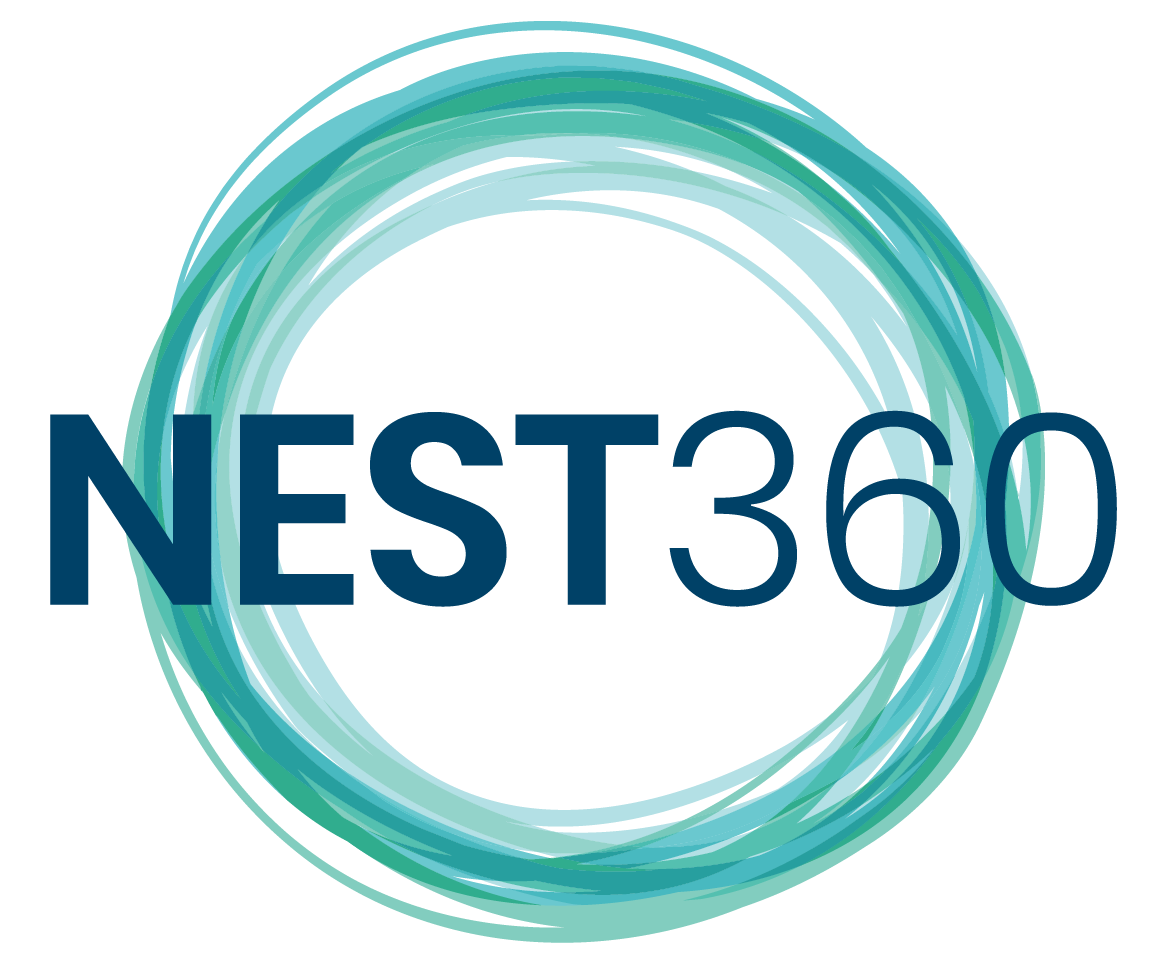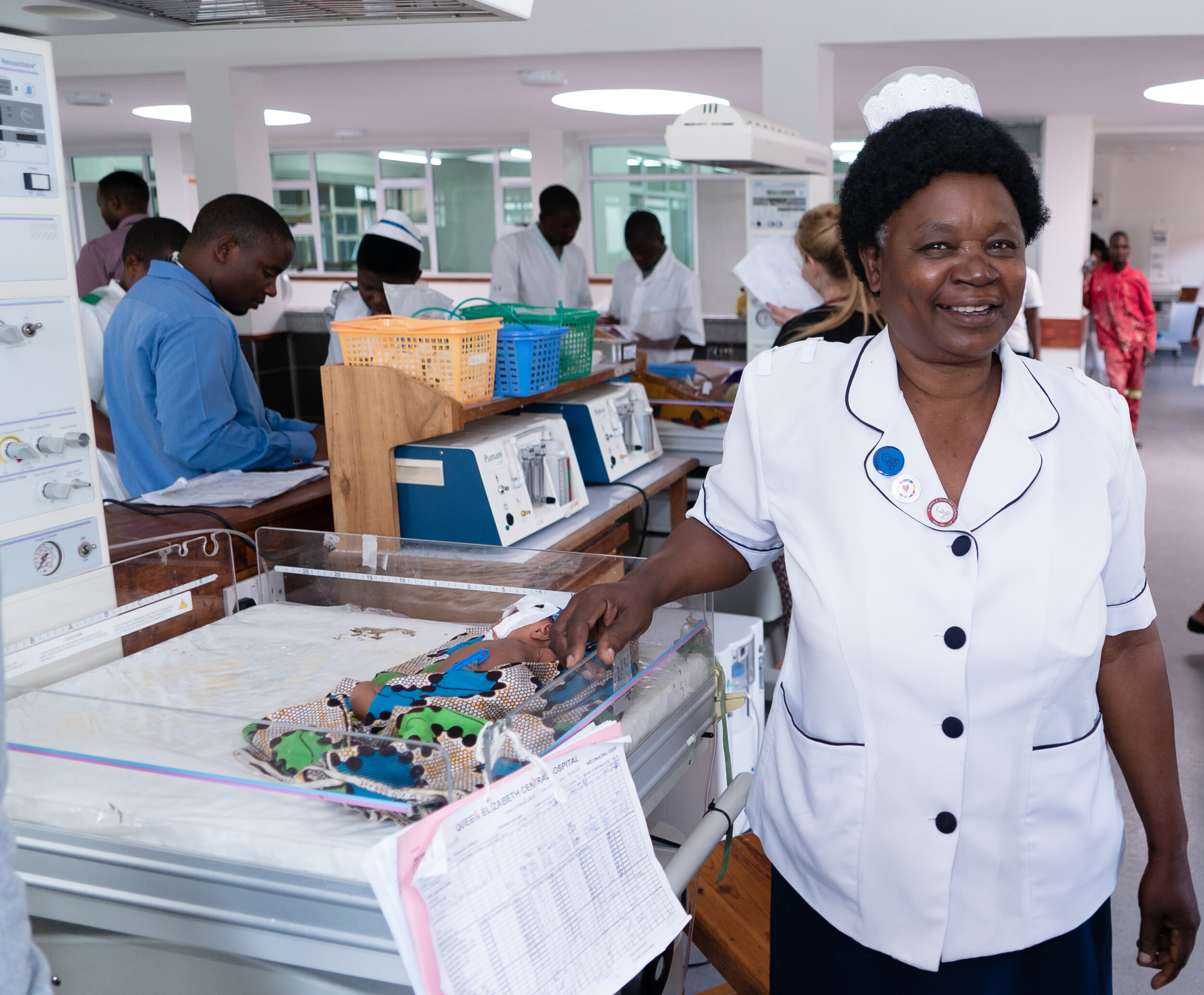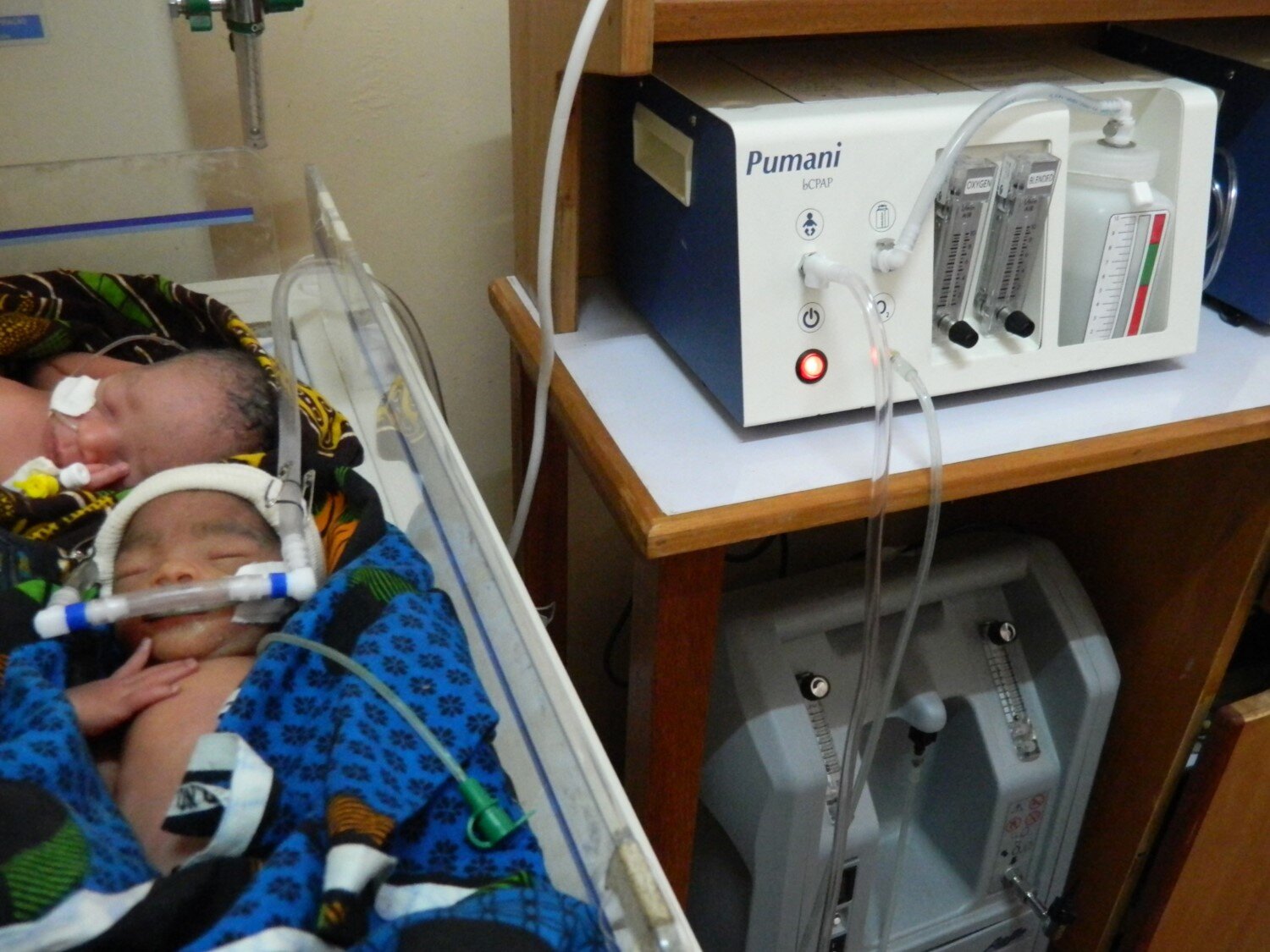Pumani bubbleCPAP
MLC VOYAGER | Created by William Marsh Rice University
The Pumani bubbleCPAP is a low-cost respiratory device for newborns and young children designed to be used in low-resource hospital settings to treat patients who weigh between 1-10 kg. Pumani provides a continuous flow of pressurized air into the patient’s airway, which prevents the patient’s lungs from collapsing during exhalation.
1,470,000 Lives Impacted
Low-income countries are often limited in their access to life-saving medical technology by high machine cost and complex user and maintenance requirements. Pumani bubbleCPAP is designed to be effective, durable, and sustainable in low-resource settings. A clinical evaluation conducted in Malawi showed that use of the Pumani to treat neonatal respiratory distress resulted in 27% absolute improvement in survival, as compared to patients treated with oxygen therapy alone.
This low-cost, high-quality respiratory support device for newborns and children is used in over 1500 hospitals across 35+ counties. The Pumani bubbleCPAP device was the first NEST360 (Newborn Essential Solutions and Technologies) device to be scaled. NEST360 is an international alliance of experts who have joined together to end preventable newborn deaths at hospitals across Africa by delivering and sustaining affordable health technologies and services that enable countries to improve outcomes, save newborn lives, and empower the medical workforce of the future.
The Innovation
Acute respiratory infections and respiratory distress at premature birth are two of the leading causes of global child mortality. In high income settings, babies in respiratory distress receive ventilatory support or bubble Continuous Positive Airway Pressure (bubbleCPAP). However, the typical bubbleCPAP setup used in high-resource settings is too costly for most low-resource environments. The Pumani bubbleCPAP (“Pumani”), designed for use in low-resource settings, marks a radical departure from the current use of oxygen therapy to treat Respiratory Distress Syndrome (RDS) in small and sick newborns and young infants.
Pumani provides the same level of therapeutic pressure as more expensive commercially available bubbleCPAP machines but at one-third the cost of other ‘low-cost’ CPAPs available. Pumani is significantly easier to use as it comes in one piece, is set up in five minutes, and staff can be trained to use the technology in a day. It is also easier to maintain and includes spare parts and instruction materials. Despite a low-cost design, Pumani was designed for durability and certified with ISO 13485 environment with CE marking.
About Rice University
Rice University aspires to pathbreaking research, unsurpassed teaching, and contribution to the betterment of our world. The Rice360 Institute for Global Health Technologies helps fulfill this mission by working with global partners and students to design and implement new technologies that solve global health challenges. Once early stage technologies are designed, they are evaluated, refined, deployed, and scaled globally. The Pumani bubbleCPAP was designed at Rice360 in collaboration with African clinicians in Malawi and is one of the first small and sick newborn technologies included in the NEST360 package. The NEST360 model has been implemented in four countries with plans to expand to all of sub-Saharan Africa by 2030.
Implemented in
Rice University’s innovation has been implemented in:
Over 35 countries across sub-Saharan Africa, South America, South Asia, and the Middle East.



